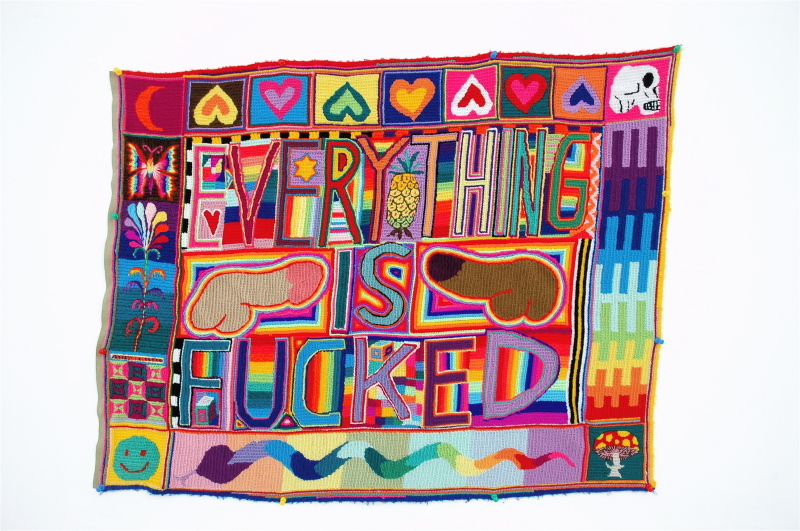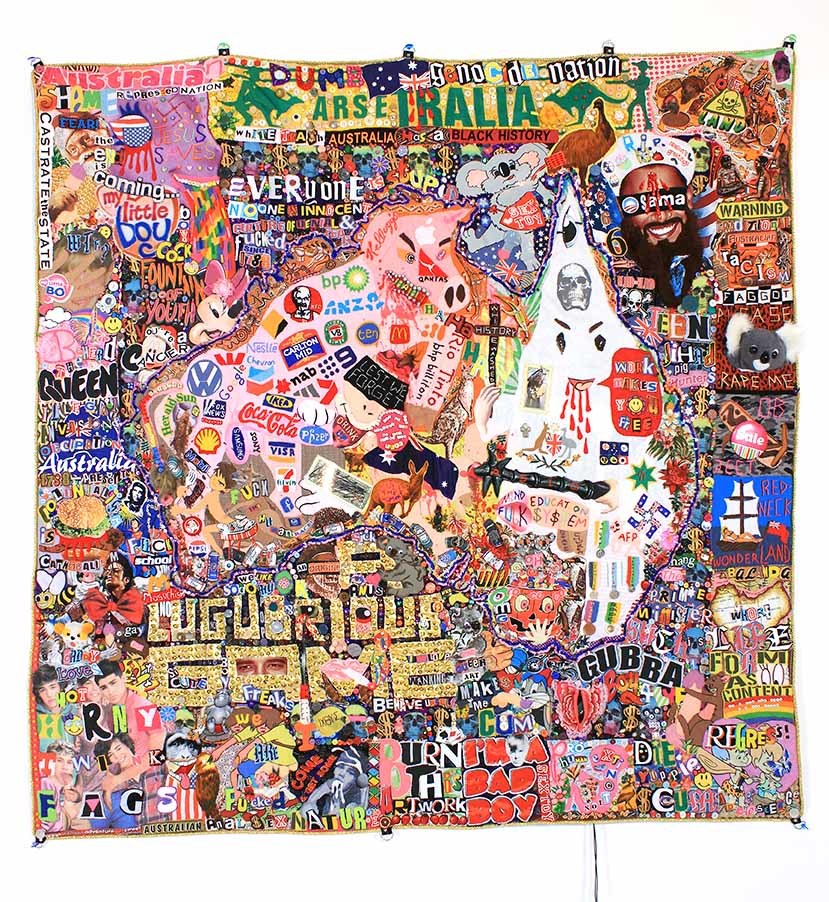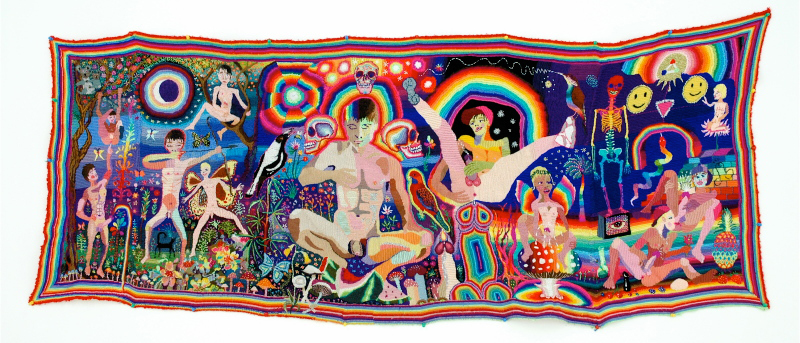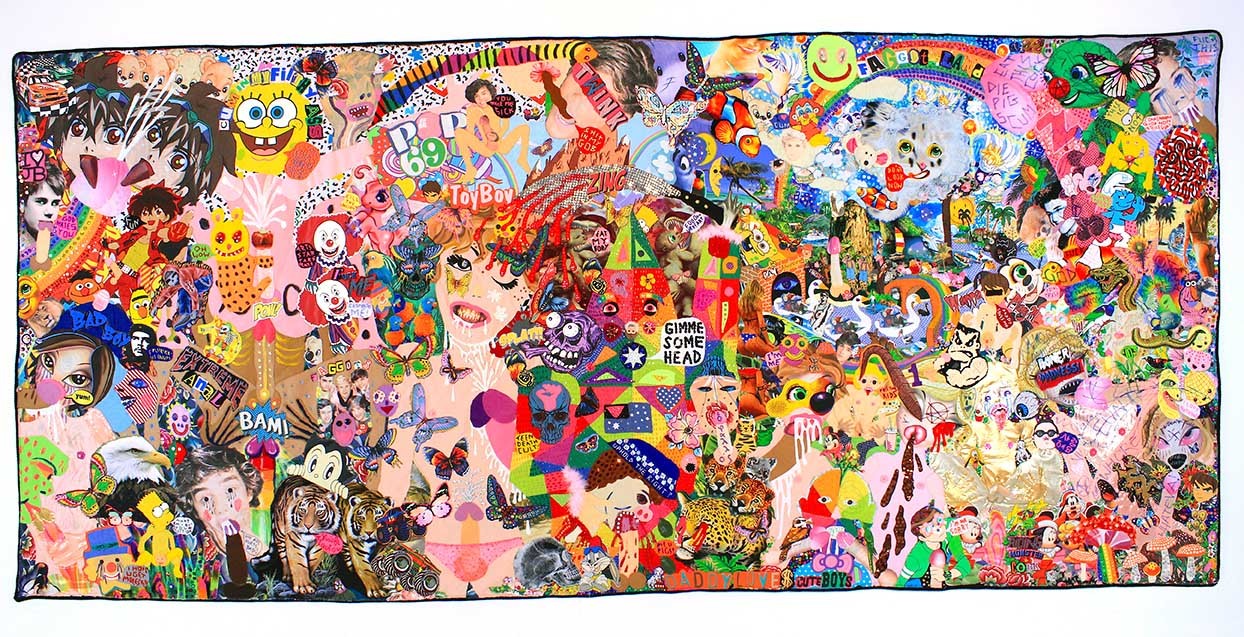From afar, Paul Yore‘s art looks like a technicolored explosion that’s sweeter than sharing a cupcake with your numero uno crush. Inch a little bit closer, and that sweetness turns salty. His body of work is a complex exploration of queer culture, politics and homo-eroticism.
Already established within the art world, Paul became a household name in 2013 when his work Everything is Fucked was seized by the Victorian Police. The piece was a collage of sex toys, balloons, and a boy with Justin Beiber’s head peeing from a dildo into a sink. Paul fought the child pornography charges over the piece and had them dismissed. Despite proving his innocence, the young artist became a central point of reference in ongoing censorship debate.
With an upcoming exhibition at Neon Parc, i-D caught up with Paul to discuss how things change and stay the same.
Before we begin, I feel like it’s worth talking about Everything is Fucked. That work, and by extension, you became a big part of the censorship debate—it’s even a part of University curriculum. How has that conversation progressed since?
One of the things about censorship is that you don’t really know what’s going on. You hear inside stories about art galleries not selecting or showing certain artists—even if those works are in their holding—because there is a real fear about backlash. I’m cynical, and I think the conversation is regressing because conservatism is generally creeping in.

The queer community is still fighting for visibility in the wider media. Do you feel your work has played a part in sharing queer narratives?
Yes, I guess I have carried on with those things in my work [since Everything is Fucked.] I think it’s important to always contextualise these questions because people that are still marginalised are sometimes fearful of discussing these issues. The type of work I’m making is important in disseminating those ideas; especially in textiles because they’re tactile and soft, and approachable or domestic you know?
Obviously using really bright colours and sequins—almost employing the language of drag—makes the work quite digestible. They’re heavy on the visual and people immediately engage with them. I think that’s important to frame [queer experience] so it’s not just a hardcore photographic depiction, rather it’s mediated in a way that people can still engage with it.

You’re using glitter, sure, but the work is still quite brutal: like your tapestry Welcome to Hell. When you made that, did you have to consider your own personal idea of hell?
More and more our global conditions are resembling a type of living hell. I’ve always been concerned with ecology, and I think that’s something that’s strangely ignored a lot. People get caught up in the day-to-day bullshit of life and the political discourse is always focused on something else, but I think it’s an increasingly un-ignorable aspect of life. Environmentally, things are only getting worse.

Is that explored in your upcoming exhibition at Neon Parc? From what I’ve seen, your new work was inspired by a trip to Europe.
The whole premise of that research trip was looking at outsider art—art by socially marginalised people, especially in psychiatric hospitals. It was mainly historical, so early 20th century examples of outsider art. I also looked at folk and junk art. It was really good to see British historical examples of that type of art, which were a big point of inspiration for my works.

How do those elements—trash, junk, folk art—manifest in your show?
The exhibition I’m working on has a large installation in the centre of the space, like a junk art installation and then the walls will be covered in these new large scale textiles that I’ve been working on. Definitely textiles are what I’m more and more invested in. It’s more of an obsession, the methodology of it has an almost penetrative or therapeutic quality.
Paul Yore will be exhibiting his latest work from April 22 to June 18 at Neon Parc, Brunswick.
Credits
Text Hannah Butterworth
